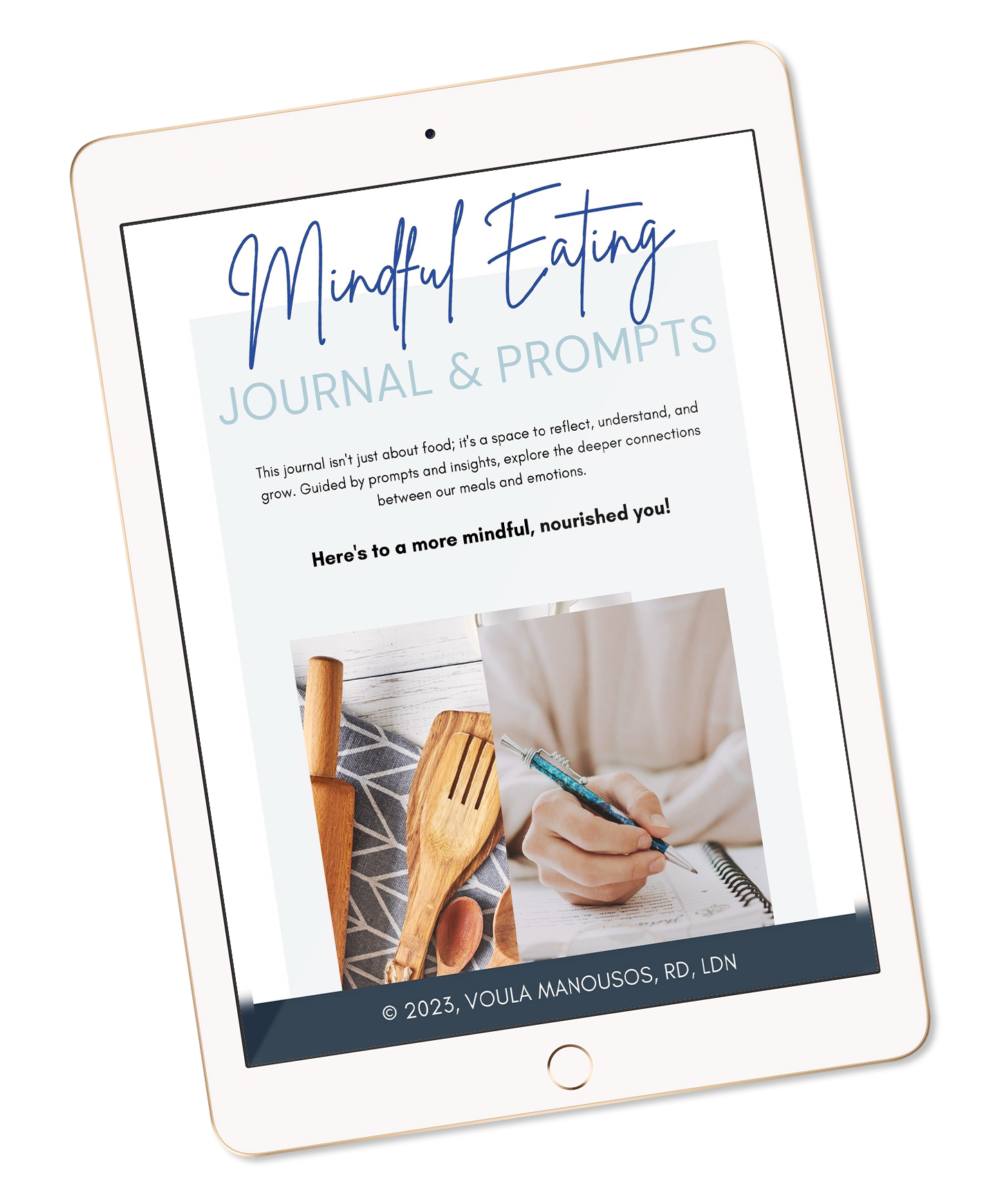Welcome to my comprehensive guide on portion control for weight loss. This is a topic that’s near and dear to my heart, and I’m excited to share my insights and strategies with you. Given the depth and importance of this topic, I’ve decided to split this guide into two parts.
In this first part, we’ll talk about portion control and why it’s crucial for weight loss. I will also share the first three of our eight key tips to help you start your journey towards better portion control. These tips will provide you with practical strategies to
reassess your plate, prioritize nutrient-dense foods, and incorporate practical tips for portion control.
In the second part, which will be released next month, I’ll continue with the remaining five tips where you’ll learn how to tune into your body’s signals, navigate eating out, and make the most of food labels.
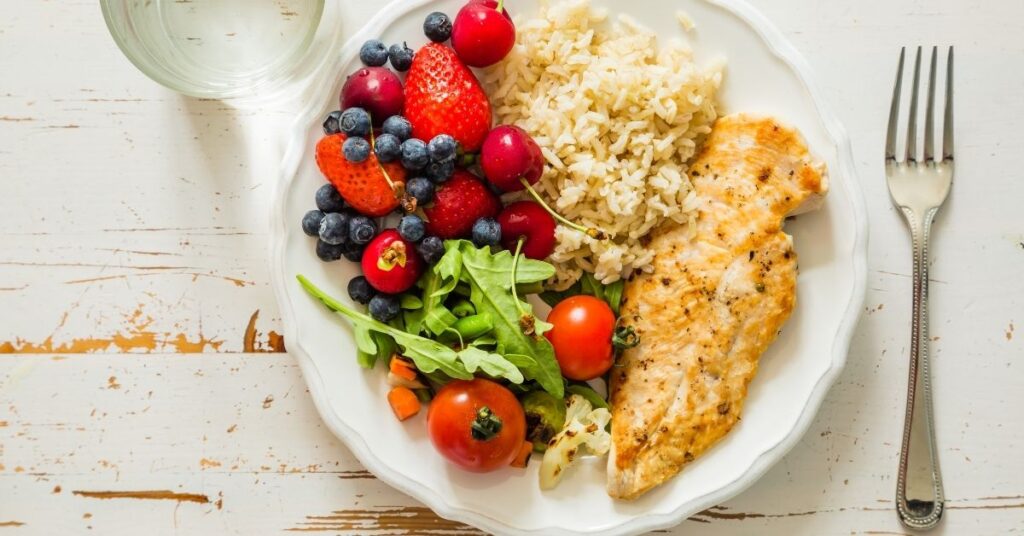
So, without further ado, let’s dive into the first part of our guide on portion control for weight loss!
Embracing portion control for weight loss can be a game-changer in your journey towards a healthier lifestyle. Portion control is not about strict calorie counting or feeling deprived. Instead, it’s about understanding and adjusting portion sizes to align with your body’s needs, promoting weight loss without sacrificing satisfaction. It’s about mindful eating, savoring each bite, and tuning into your body’s hunger and fullness cues.
In this blog post, I’ll share three practical and effective tips to help you incorporate portion control into your daily routine. These tips go beyond just reducing your portion size—they’re about making smarter food choices, planning ahead, and fostering a healthier relationship with food.
So, if you’re ready to lose weight, maintain it, and transform your approach to eating, keep reading. This journey is about sustainable change, and I’m here to guide you every step of the way.

Understanding Portion Control for Weight Loss
When it comes to weight loss, one of the most common misconceptions I encounter is the belief that drastic dietary changes or severe restrictions are the only way to achieve results. However, in my years of practice as a dietitian, I’ve found that it’s often the small, sustainable changes that make the most significant impact. One of the most effective changes you can make is understanding and adjusting your portion sizes.
Let me share a story with you. One of my clients, let’s call her Sarah, came to me feeling frustrated and defeated. She had tried numerous diets, cutting out carbs, going vegan, even trying juice cleanses, but nothing seemed to work long-term. She was eating ‘healthy’ foods but was still struggling to lose weight.
When we started working together, one of the first things we looked at was her portion sizes. Sarah was surprised to learn that even though she was eating nutritious foods, the portions were much larger than necessary. For instance, a proper portion of cooked pasta is about a cup, but Sarah was eating two cups at a time, doubling her calorie intake.
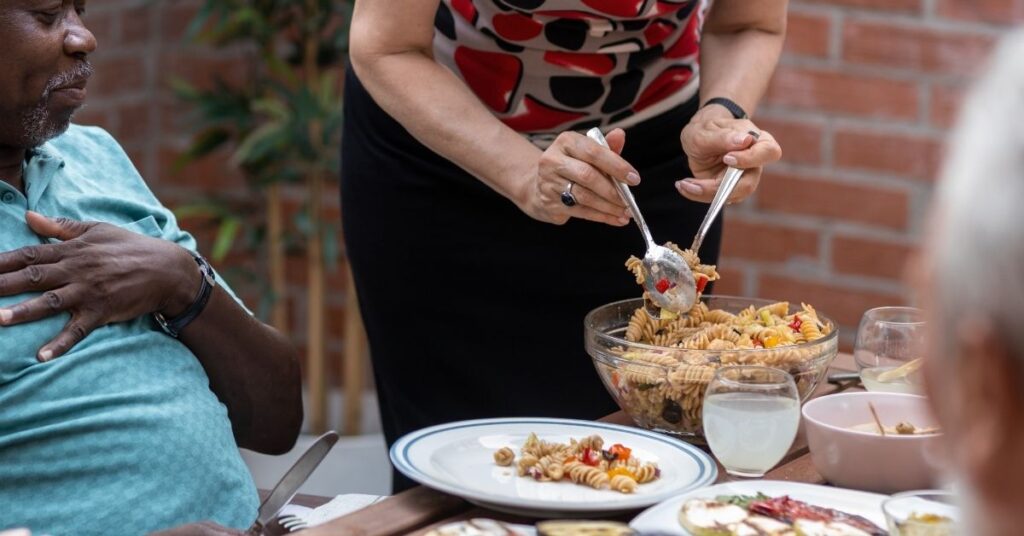
We worked on reducing her typical portion size, focusing on smaller portions that still satisfied her. We used visual cues, like comparing a portion of meat to the size of a deck of cards or a serving of cheese to the size of a pair of dice. Over time, Sarah started to see changes. She was losing weight, not by restricting what she could eat, but by adjusting how much she ate.
Understanding portion control for weight loss is about more than just eating less. It’s about learning what proper portions look like and realizing that you can still enjoy your favorite foods, just in smaller amounts. It’s a sustainable change that can lead to significant results, and it’s a strategy that anyone can implement.
The Science Behind Portion Sizes and Weight Loss
The science behind portion control is both fascinating and empowering. It’s all about balance and understanding how the quantity of our food intake impacts our bodies. When we consume more calories than our bodies need for energy, the excess is
stored as fat, leading to weight gain. By managing your portion size, you can ensure you’re providing your body with the nourishment it needs, without the excess.
According to the National Library of Medicine, when people were served larger portions, they consumed more food, regardless of their hunger level. This phenomenon, known as “portion distortion,” shows how easily we can be influenced by the amount of food presented to us.
But here’s the empowering part: By becoming aware of portion sizes and making a conscious effort to change them, we can significantly reduce our calorie intake, leading to weight loss. It’s not about depriving ourselves or drastically changing our diets. It’s about making mindful decisions about the amount of food we consume.
Let’s take a practical example. If you typically start your day with a large bowl of cereal, try reducing the portion by a third. Consider adding some nuts for protein so the cereal is more filling. You’ll still enjoy a satisfying breakfast, but you’ll consume fewer calories. Apply this approach to all your meals, and the calorie savings can be substantial.
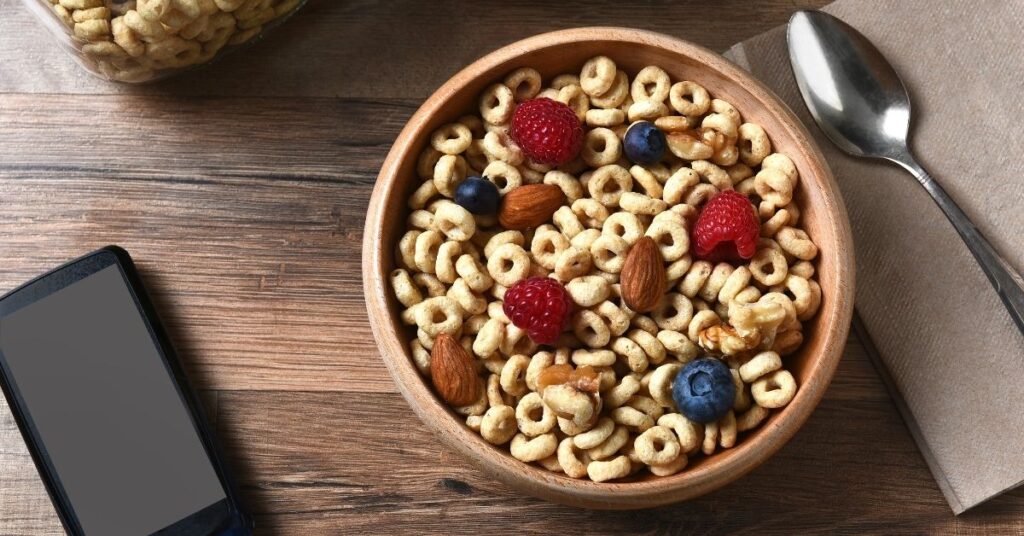
Understanding the science behind portion control is a crucial step towards healthy eating and sustainable weight loss. It’s a simple yet effective strategy: By managing our portion sizes, we can enjoy a diverse diet, consume fewer calories, and manage our weight more effectively. It’s not just about what we eat, but how much we eat. And that’s a powerful tool in our weight loss journey.
How to Portion Control for Weight Loss: An Overview
If you’ve ever felt overwhelmed by the idea of portion control, you’re not alone. Many of us, especially in the United States, have grown accustomed to a huge portion size at every meal. It’s become the norm in many restaurants and even in our homes. But here’s the good news: learning to control your portion size is not only doable, but it can also be a satisfying and empowering part of your weight loss journey.
The key to portion control is balance.
It’s not about severe restrictions or feeling like you’re being punished. It’s about understanding what a proper portion size looks like and learning to be satisfied with it. It’s about choosing nutrient-rich, less energy-dense foods that fill you up without loading you with excess calories.
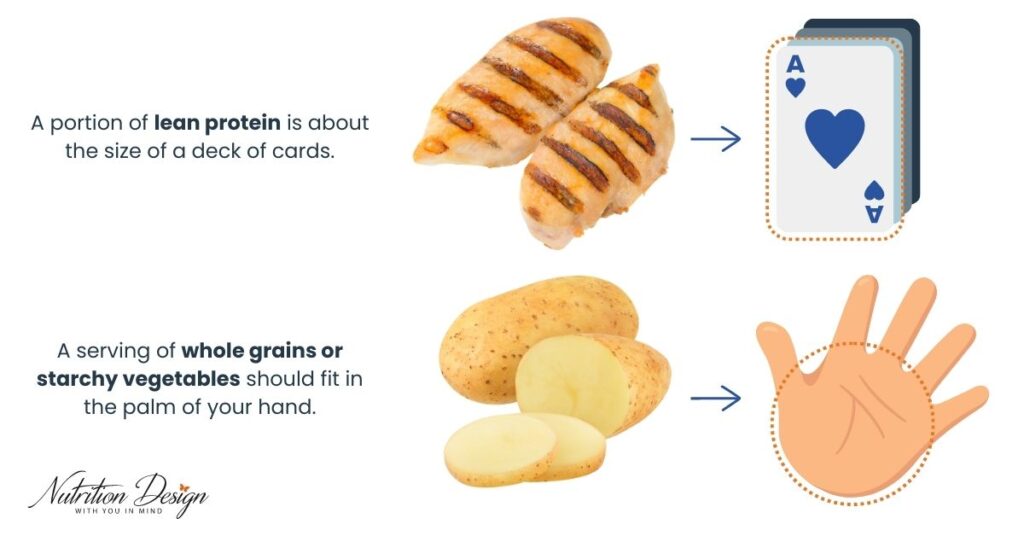
For instance, a proper portion of lean protein is about the size of a deck of cards. A serving of whole grains or starchy vegetables should fit in the palm of your hand. Non-starchy vegetables, on the other hand, can be eaten in larger quantities because they are low in calories but high in fiber, which helps you feel full.
It’s also important to remember that it’s not your fault if you’re used to larger portions. Our environment plays a significant role in shaping our eating habits. But while we can’t always control the portion sizes served to us at restaurants or social gatherings, we can control how much of it we eat.
Portion control is a skill, and like any skill, it takes practice. But with time and consistency, it becomes second nature. And the best part? You can still enjoy your favorite foods. By controlling your portion sizes, you’re not depriving yourself; you’re empowering yourself to make healthier choices, leading to sustainable weight loss. And that’s something to celebrate.
Now that we’ve laid the groundwork, it’s time to jump right into the practical, actionable tips you can start implementing today. The first tip revolves around the fundamental concept of reassessing your plate. We often underestimate the size of the portions we consume, and it’s crucial to have a clear understanding of what ‘normal’ portion sizes should be. This step is foundational to controlling your portions, and it’s much simpler than you might think. So, let’s delve into our very first tip…
Tip #1. Reassess Your Plate: Understanding Normal Portion Sizes
One of the first steps to control portions and promote weight loss is to reassess your plate. Understanding what a ‘normal’ portion size looks like can be a real eye-opener and can help you make healthier choices. Here’s how you can start:
- Visualize Your Plate
- Imagine your plate divided into sections. Half of your plate should be filled with non-starchy vegetables, a quarter with lean protein, and the remaining quarter with whole grains or starchy vegetables. This balance ensures you get a variety of nutrients while controlling calorie intake.
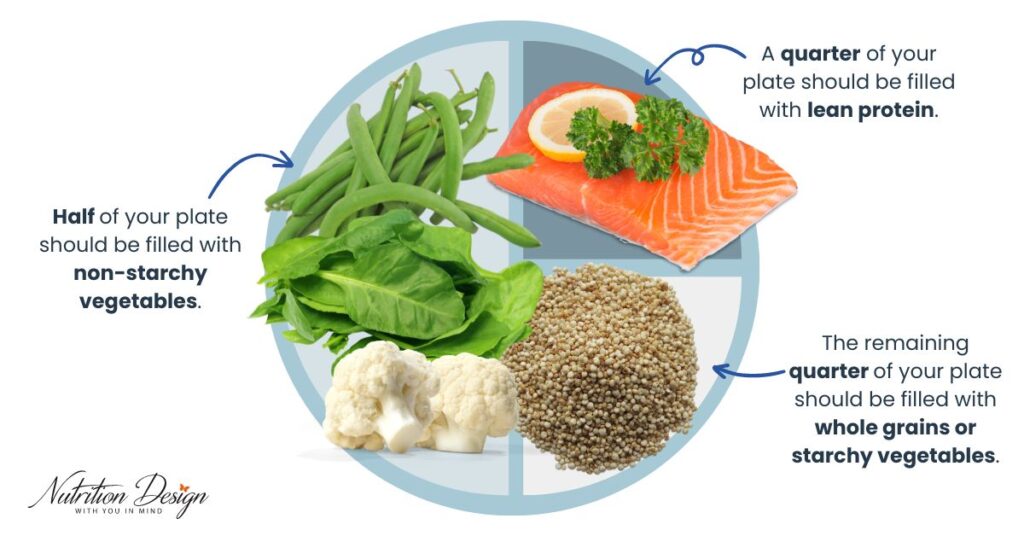
- Use Everyday Objects for Reference
- It can be hard to estimate portion sizes accurately. Using everyday objects can help. For example, a serving of meat should be about the size of a deck of cards, a serving of grains should fit in your cupped hand, and a serving of fat, like butter or oil, should be about the size of a thumb.
- Invest in Measuring Tools
- Consider using measuring cups, a kitchen scale, or even portion control plates to help you get a better sense of serving sizes.
Remember, the goal is not to eat smaller portions of everything, but to eat the right portions of each food group. By reassessing your plate and understanding normal portion sizes, you can enjoy a balanced diet that supports your weight loss goals without feeling deprived.
As we move from the concept of reassessing your plate, we shift our focus to the quality of what we’re eating. This leads us to our second tip: “Quality Over Quantity.” This tip emphasizes the importance of choosing nutrient-dense foods for healthier, more satisfying meals. Let’s delve into how you can put this into practice
Tip #2. Quality Over Quantity: Prioritizing Nutrient-Dense Foods
When it comes to portion control, it’s not just about eating less—it’s about eating better. Prioritizing nutrient-dense foods over energy-dense foods can help you feel satisfied with fewer calories, making it easier to control portions and lose weight. Here’s how you can put this tip into action:
- Choose Nutrient-Dense Foods
- Nutrient-dense foods are high in nutrients but relatively low in calories. They include fruits, vegetables, lean proteins, and whole grains. On the other hand, energy-dense foods are high in calories but low in nutrients, like sugary drinks, fast food, and processed snacks. Aim to fill your plate with more nutrient-dense foods.
- Understand Portions for Different Foods
- Not all foods are created equal, and neither are their portion sizes. For nutrient-dense foods like vegetables, a larger portion is okay. But for energy-dense foods like fats and sweets, a smaller portion is more appropriate. For example, a fist-sized portion of vegetables is a good serving size, while a thumb-sized portion is enough for fats.
- Create Well-Balanced Meals
- A well-balanced meal includes a variety of food groups. Aim for a plate that includes lean protein, whole grains or starchy vegetables, non-starchy vegetables, and a small amount of healthy fats. This balance ensures you get a mix of nutrients and keeps you feeling satisfied.

By focusing on the quality of your food, not just the quantity, you can enjoy satisfying, nutrient-dense meals that support your weight loss goals. Remember, it’s not about deprivation—it’s about making smarter choices that nourish your body and your taste buds.
Now that we’ve discussed reassessing your plate and the importance of prioritizing nutrient-dense foods, we come to our third tip. Tip #3 is all about offering tangible, easy-to-adopt strategies to help you manage your portion sizes effectively in your daily life. So, let’s dive into these practical suggestions.
Tip #3. How to Portion Food for Weight Loss: Practical Tips
Understanding portion sizes is one thing, but putting it into practice can be a whole different ball game. But don’t worry—I’ve got you covered with some practical tips that can help you manage your portion sizes and develop good eating habits. Here’s how:
- Use Smaller Plates and Bowls
- This is a simple yet effective trick. Smaller plates and bowls can make a portion of food appear larger, which can help you feel more satisfied with less food.
- Pre-Portion Your Snacks
- Instead of eating directly from the bag or box, portion out your snacks into individual servings. This can prevent mindless eating and help you stick to your ideal portion size.
- Start with a Glass of Water
- Drinking a glass of water before your meal can help you feel a bit more full, which can help you control your portion sizes.
- Load Up on Veggies
- Vegetables are low in calories but high in fiber, which can help you feel full. Try to fill half your plate with non-starchy vegetables.
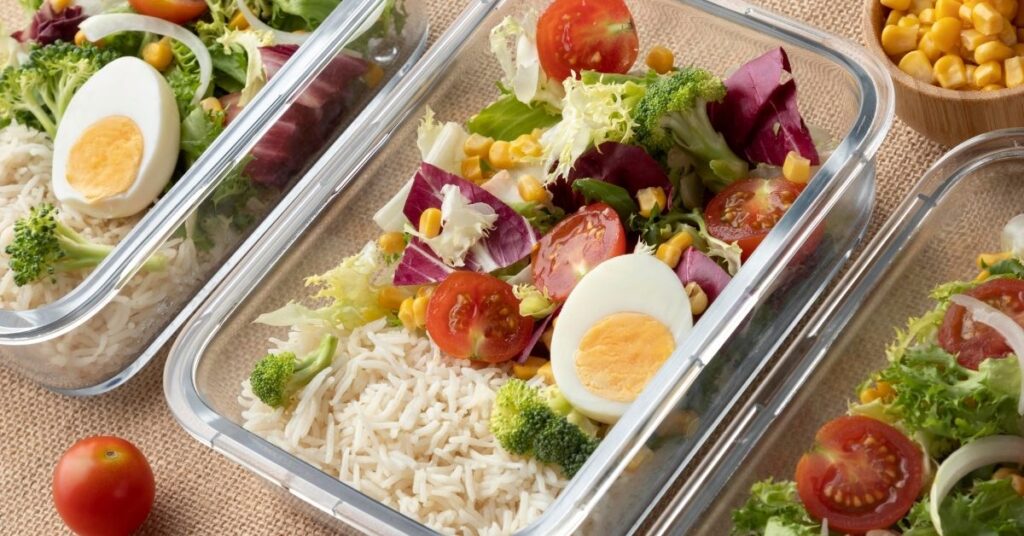
Remember, portion control is not about deprivation—it’s about balance. By incorporating these practical tips into your routine, you can manage your portion sizes, enjoy your meals, and support your weight loss goals. It’s all about making small changes that add up to big results.
Wrapping Up Part 1: Your Journey Towards Portion Control Has Just Begun
That wraps up the first part of our deep dive into portion control for weight loss. We’ve covered the first three tips, providing you with practical strategies to reassess your plate, prioritize nutrient-dense foods, and incorporate practical tips for portion control.
I hope you’ve found these initial tips helpful and are ready to start implementing them in your daily life.
We’re just getting started. In the next part of this 2-part series, we’ll explore five more tips that will further equip you with the knowledge and tools you need to successfully manage your portions and lose weight.

Ready to take the next step in your weight loss journey? Why not book a complimentary consultation with me? Together, we can create a personalized plan that fits your lifestyle and helps you achieve your health and weight loss goals.





